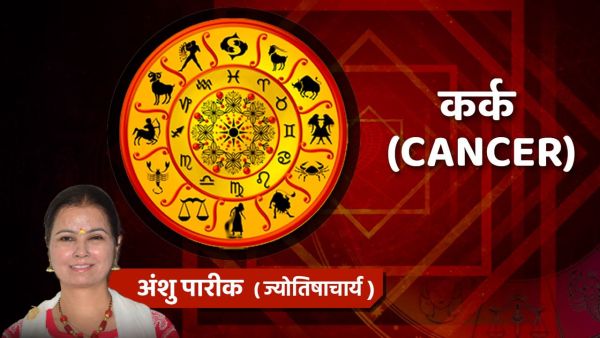Universal Sompo MD explained that while quality care is important, the premium component, when billed to insured/ insurers, puts long-term strain on premiums for everyone.
Rising medical costs, increased premium hospitalisation for heart ailments, and a surge in lifestyle diseases are putting pressure on India’s health insurance premiums, said Sharad Mathur, MD & CEO of Universal Sompo. He noted that while insurers are facing growing claims, premium hikes must be backed by data and not driven by short-term cost pressures. Mathur's remarks come at a time when health insurance policyholders have raised concerns over rising costs of coverage, particularly in urban areas.
Premium healthcare pushing up claims
Mathur said the trend of expensive hospital treatments in premium facilities is contributing to higher claim amounts. “Today, we’re seeing a growing trend of world-class hospitals, where premium infrastructure and deluxe facilities reflect in the medical bill. For example, the same surgery done for ₹5 lakhs at a regular hospital might cost over ₹10 lakhs at a deluxe super-specialty facility,” he said.
He explained that while quality care is important, the premium component, when billed to insured/ insurers, puts long-term strain on premiums for everyone.
Surge in heart and lifestyle-related claims
The industry is also seeing more high-value claims linked to heart-related illnesses and lifestyle diseases, especially in people over the age of 40. “These trends are adding to the overall claims burden, making it even more important to balance access to care with long-term affordability,” Mathur said. He pointed out that such conditions are on the rise due to urban lifestyles, sedentary habits, and poor dietary patterns, all of which are increasing the risk exposure.
Profitability concerns rising in health insurance
Despite growing demand for health insurance, maintaining profitability has become difficult for insurers. “The pressure on insurers to balance affordability and profitability is immense,” Mathur said. “While the system is engaging too late with lifestyle diseases, a shift toward preventive care will be critical.” He added that climate and environmental stressors are also starting to influence health outcomes, which could widen risk exposure if not addressed early.
Need for better communication in claims
On the issue of policyholder grievances, Mathur said most complaints are not about claim repudiation but about customers not being fully aware of what is covered. “Often, it's not that claims are unfairly denied, but that expectations don’t match the policy coverage,” he said. He said that policy documents are often technical, and a shift towards simpler communication is needed across the industry.
Mis-selling driven by unclear communication
When asked about mis-selling, Mathur said the core issue is often under-communication rather than mis-selling. “Take, for example, the commonly heard pitch: ‘You go to the hospital, and we’ll take care of everything.’ While well-intentioned, such blanket statements can lead to misunderstandings,” he explained. He stressed the need for a more consultative approach in insurance sales, where coverage is matched to an individual's needs, lifestyle, and risk factors.
Awareness and inclusion key to future growth
Mathur acknowledged that a large section of India’s population still remains outside the formal health insurance net. He said about 40–45% of people have some form of health cover, leaving a large gap in protection. “While countries like Australia and Vietnam boast health insurance penetration of 70–80%, India, due to its scale and complexity, lags behind,” he said. He added that future insurance models will need to be more inclusive, affordable, and easier to access digitally if India is to bridge its protection gap.
Premium healthcare pushing up claims
Mathur said the trend of expensive hospital treatments in premium facilities is contributing to higher claim amounts. “Today, we’re seeing a growing trend of world-class hospitals, where premium infrastructure and deluxe facilities reflect in the medical bill. For example, the same surgery done for ₹5 lakhs at a regular hospital might cost over ₹10 lakhs at a deluxe super-specialty facility,” he said.
He explained that while quality care is important, the premium component, when billed to insured/ insurers, puts long-term strain on premiums for everyone.
Surge in heart and lifestyle-related claims
The industry is also seeing more high-value claims linked to heart-related illnesses and lifestyle diseases, especially in people over the age of 40. “These trends are adding to the overall claims burden, making it even more important to balance access to care with long-term affordability,” Mathur said. He pointed out that such conditions are on the rise due to urban lifestyles, sedentary habits, and poor dietary patterns, all of which are increasing the risk exposure.
Profitability concerns rising in health insurance
Despite growing demand for health insurance, maintaining profitability has become difficult for insurers. “The pressure on insurers to balance affordability and profitability is immense,” Mathur said. “While the system is engaging too late with lifestyle diseases, a shift toward preventive care will be critical.” He added that climate and environmental stressors are also starting to influence health outcomes, which could widen risk exposure if not addressed early.
Need for better communication in claims
On the issue of policyholder grievances, Mathur said most complaints are not about claim repudiation but about customers not being fully aware of what is covered. “Often, it's not that claims are unfairly denied, but that expectations don’t match the policy coverage,” he said. He said that policy documents are often technical, and a shift towards simpler communication is needed across the industry.
Mis-selling driven by unclear communication
When asked about mis-selling, Mathur said the core issue is often under-communication rather than mis-selling. “Take, for example, the commonly heard pitch: ‘You go to the hospital, and we’ll take care of everything.’ While well-intentioned, such blanket statements can lead to misunderstandings,” he explained. He stressed the need for a more consultative approach in insurance sales, where coverage is matched to an individual's needs, lifestyle, and risk factors.
Awareness and inclusion key to future growth
Mathur acknowledged that a large section of India’s population still remains outside the formal health insurance net. He said about 40–45% of people have some form of health cover, leaving a large gap in protection. “While countries like Australia and Vietnam boast health insurance penetration of 70–80%, India, due to its scale and complexity, lags behind,” he said. He added that future insurance models will need to be more inclusive, affordable, and easier to access digitally if India is to bridge its protection gap.








